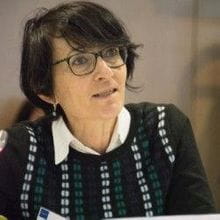
The Online Workshop will aim to reflect and review the available evidence on the relationship between bidding-zone configurations and market liquidity. It will then consider to what extent larger bidding zones, when not supported by the capacity of the underlying network, can promote competition to the benefit of energy consumers.
To explore these issues, the Workshop will be structured in two sessions:
This workshop is exclusively open to national regulators, representatives from public bodies and associate & major donors of the FSR Energy area. Special registration requests must be submitted to the coordinator of the workshop Mara Radulescu.
The Highlights from the workshop are available here.
The integration of the internal electricity market has delivered and is still delivering significant benefits to European electricity consumers, in terms of greater choices and better prices. Unfortunately, these benefits risk being overshadowed by the increasing level and costs of remedial actions. These actions are required to maintain system security in the face of flows which, while creating congestion, cannot be adequately controlled – i.e. limited – through congestion management mechanisms, as they are scheduled within the same bidding zone, or across other bidding-zone borders in an uncoordinated way.
According to ACER’s estimates, already in 2017 the cost of remedial actions exceeded 2 billion euro across the EU, with Germany accounting for approximately half of the total. Underlying these remedial action costs, there is clearly an inefficient use of the network, or, more precisely, a use of the network that favours intra-zonal trading at the expense of cross-zonal trading, with the distinction between these two types of trading being based on a bidding-zone configuration which reflects more the legacy of electricity systems before liberalisation than any optimality criteria applied to the new reality of energy flows.
It is important to emphasise that the bidding-zone configuration does not affect the physical ability of the network to transmit electricity from generators to loads. However, the configuration of bidding zones determines how the underlying physical limitations of the network can be imposed on market participants trading across large areas or regions, and this affects the efficiency with which the network is used, as well as the behaviour of market participants.
Beyond the rising costs of remedial actions, the large volumes of unscheduled flows are another indicator of the difficulties of controlling flows on the European electricity system in an efficient way by using congestion management on current zonal borders.
A proper bidding-zone configuration is therefore essential for the security and efficiency of the EU electricity system and markets. This is recognised in the recast of the Electricity Regulation, where it is specified that “[t]he configuration of bidding zones in the Union shall be designed in such a way as to maximise economic efficiency and to maximise cross-zonal trading opportunities […], while maintaining security of supply”.
As required by the same Regulation, a bidding zone review was launched in October 2019. Such a review process rests, beyond the set of alternative bidding zone configurations to be analysed in the review process, on the criteria to assess the relative merits of the alternative configurations, on the basis of which the final decision can be taken.
In this regard, article 33(1) of the CACM Regulation lists a minimum set of thirteen criteria, grouped into three categories: network security, market efficiency, and stability and robustness of bidding zones. The challenge is however that some, if not most of these criteria are difficult to quantify, let alone monetise, and, in any case, the legislative provision does not establish any ranking among those criteria, nor a structured approach on how to appreciate their importance.
In the end, as it was the case in the previous review, it is likely that the comparison of the performance of alternative bidding-zone configurations will boil down to the perceived trade-off between the efficiency of the market outcome and operational security, on the one hand, and market liquidity, on the other hand. As a first approximation, any configuration characterised by smaller bidding zones should improve operational security as it makes more flows subject to congestion management procedures and, therefore, managing congestion easier. By delivering a market outcome which is more likely to be feasible, such configurations will also reduce the need for economically inefficient remedial actions, thus improving the overall efficiency of the market. At the same time, smaller bidding zones are often claimed to reduce market liquidity.
With respect to liquidity, a well-functioning market, promoting competition and efficiency, is based on two mutually-reinforcing effects: i) the liquidity of the spot market so that market participants can trust the price formation mechanism and therefore the robustness of the electricity spot price as the underlying reference for the forward/futures market; and ii) the liquidity of the forward/futures market to allow effective hedging of the spot price risk. If one of these components is missing, the other one also suffers.
A low level of liquidity might lead to higher transaction costs, higher risks and hedging costs, which may translate into higher barriers to entry into the market. Therefore, liquidity, while not an objective in its own, is of utmost importance for the market to deliver its benefits.
That said, the evidence from Europe and the US seems at least to question the belief held by some stakeholders and commentators that a bidding-zone split and, in general, smaller bidding zones reduce market liquidity. In fact, liquidity seems to be determined more by the design of the market and the structure of the sector. And while liquidity can promote competition, the latter may impact liquidity more than the dimension of bidding zones.
What in fact seems to be more relevant for the well-functioning of the electricity market is the structure (concentration) of the sector with respect to the structure (congestions) of the network. As already indicated, different bidding-zone configurations do not change the physical ability of the network to transmit electricity from generators to loads. Larger bidding zones might appear to support greater competition in the market by allowing a larger group of market participants to compete among themselves. But, if the larger bidding zone does not reflect the actual capabilities of the network, local market power will inevitably emerge, at least as real-time approaches.
Deadline for registration: 11 June 2020
















To meet, discuss and learn in the channel that suits you best.